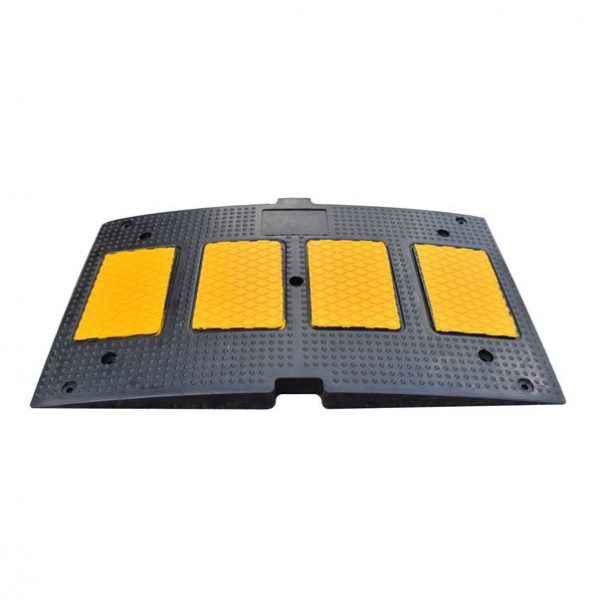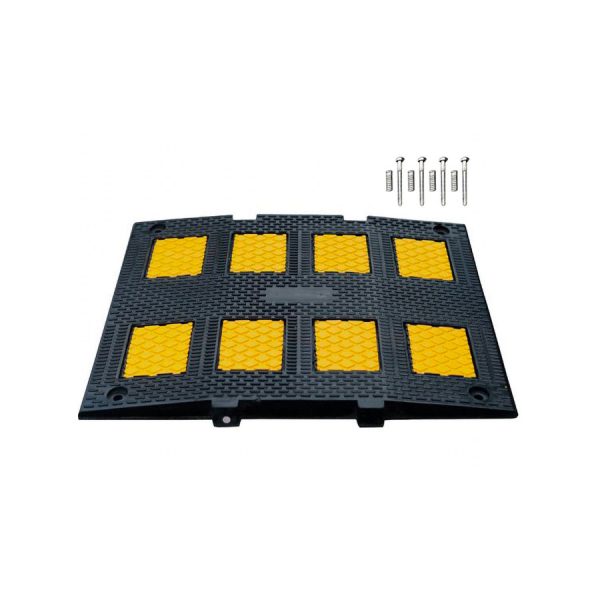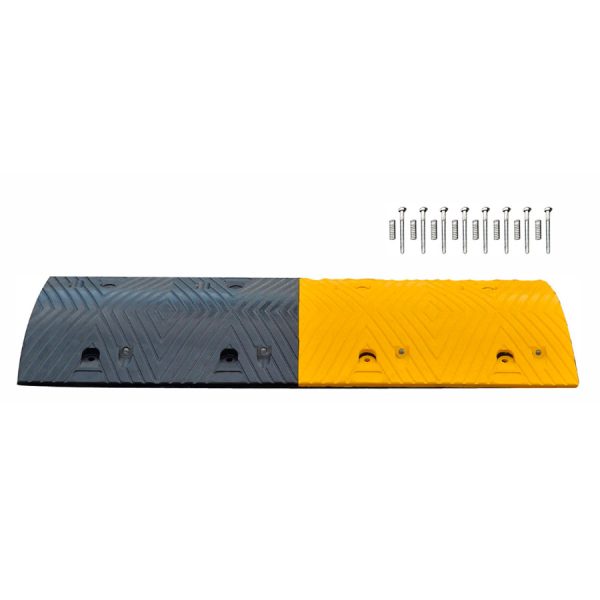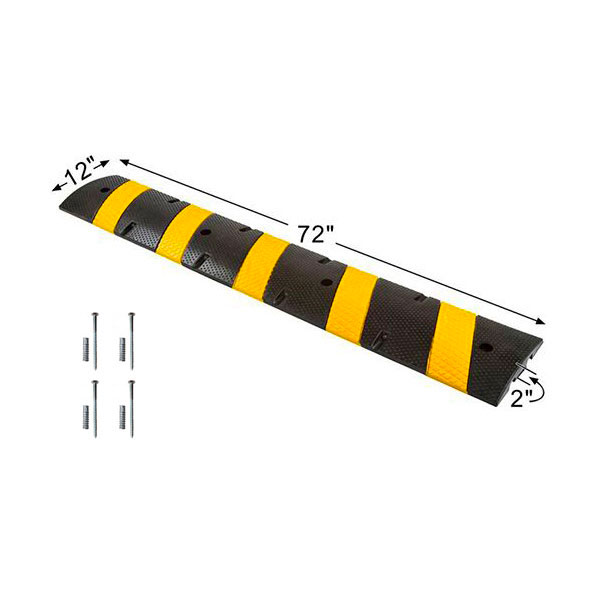Heavy duty speed bumps
-

Heavy Duty Rubber Speed Hump – Yellow / Black – Low Profile Speed Bump – Hardware Included
Price: $79.00/piece- Suitable to improve safety for parks, school zones, commercial areas, residential areas, industrial areas, sporting venues
- Specially designed to slow down vehicle traffic
- High quality rubber construction to improve durability, ideal for any type of weather conditions
- Bright yellow embedded EPDM rubber to improve visibility
- Male and Female end cap available to create 360° transitions
-

Speed Bumps for dirt roads and gravel roads. 2FT Wide
Price: $49.00/piece- Made out of heavy duty rubber material
- Excellent product to reduce vehicle traffic speed and increase safety
- Embedded yellow EPDM rubber for high visibility
- Perfect for any type of weather conditions, this product is very resistant, will not crack or break
- 4 Mounting Holes (1-1/8’D Countersink, 1/2’D Mount Hole)
-

Premium Speed Bump Hardware Included
Price: $69.98/piece- Ideal for residential, commercial, industrial areas, parks, sporting venues, school zones, etc.
- Excellent to effectively slow down vehicle traffic.
- The end cap protects section ends from wear and tear.
- Durable bright rubber yellow section and en cap, great for visibility.
- Mounting screw NOT included. Select below if you want to add them to your order and if you need them for asphalt or concrete.
-

Rubber Speed Bumps – 6’ Super HD
Price: $74.98/piece- Ideal for residential, commercial, industrial areas, parks, sporting venues, school zones, etc.
- Excellent to effectively slow down vehicle traffic.
- The end cap protects section ends from wear and tear.
- Durable bright rubber yellow section and en cap, great for visibility.
Mounting screws INCLUDED. We are the only ones that include the hardware for free.BUY NOW
Unimat heavy duty speed bumps
Heavy-duty speed bumps are an effective traffic calming solution in areas with substantial truck and commercial vehicle traffic. They play a vital role in reducing vehicle speed, enhancing safety, and protecting pedestrians and workers in industrial and logistics settings. As with any traffic calming measure, it’s crucial to consult with traffic engineers or professionals to ensure that heavy-duty speed bumps are installed correctly and tailored to the specific needs of the location.
Here are some key characteristics and considerations related to heavy-duty speed bumps:
1. Material: Heavy-duty speed bumps are constructed from durable materials that can endure the repeated impact of heavy vehicles without significant wear and tear. Common materials include recycled rubber, composite materials, or industrial-grade plastics. These materials provide the necessary strength and resilience.
2. Height and Shape: Heavy-duty speed bumps are typically higher and wider than standard speed bumps. They often have a height ranging from 4 to 6 inches and a design that ensures effective speed reduction. The shape is engineered to control speed while minimizing discomfort for drivers.
3. Weight Tolerance: These speed bumps are designed to support the weight of large vehicles, such as delivery trucks, buses, and industrial equipment. Reinforced construction and materials ensure they can withstand the stress of heavy loads.
4. Reflectivity: To enhance visibility, heavy-duty speed bumps often feature reflective elements such as embedded glass beads or reflective tape. This improves visibility, particularly in low-light conditions, and gives drivers ample time to slow down.
5. Installation: Proper installation is crucial for heavy-duty speed bumps. They must be securely anchored to the road surface to prevent shifting or damage when large vehicles pass over them. Installation may require professional expertise.
6. Spacing: Like standard speed bumps, heavy-duty speed bumps should be spaced at appropriate intervals to maintain traffic flow and minimize driver frustration while still effectively controlling speed.
7. Accessibility: Heavy-duty speed bumps are designed to accommodate larger vehicles without causing discomfort or damage. They often include gradual slopes or ramps on either side to provide a smoother transition for these vehicles.
8. Durability: These speed bumps are built to last and resist damage from heavy traffic and environmental factors. They require minimal maintenance, reducing long-term costs.
9. Compliance: Heavy-duty speed bumps must adhere to local traffic regulations and guidelines to ensure they meet safety and traffic management standards in the area where they are installed.
10. Noise Considerations: Depending on their design and material, heavy-duty speed bumps can produce more noise when vehicles pass over them due to their larger size and the heavier vehicles typically encountered in these areas. Noise-reducing features may be considered to address this issue.

